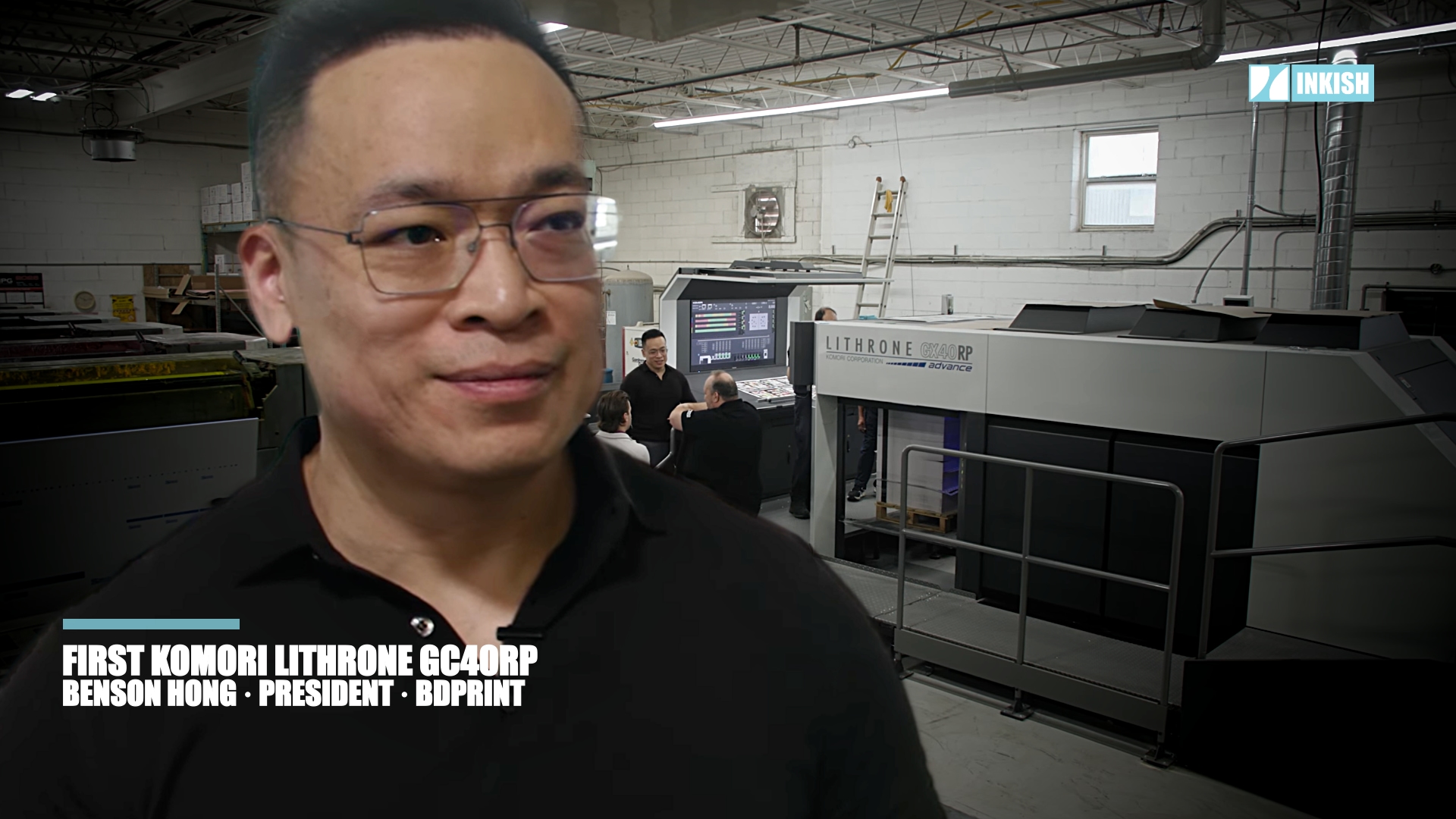Héctor Cordero – Presidente de Conlatingraf · PRINTING United 2025
En la feria Printing United 2025 en Orlando, Nayeli González de INKISH TV conversa con Héctor Cordero, presidente de Conlatingraf, sobre la reciente reunión de la organización y los desarrollos más relevantes en la industria gráfica latinoamericana.
Héctor comienza explicando que la asamblea de Conlatingraf fue un éxito, con una gran asistencia y una amplia variedad de temas abordados. “Uno de los puntos más importantes”, comenta, “fue la designación de Hamilton Terni Costa, un prestigioso consultor brasileño, como el nuevo Líder Gráfico de las Américas.” Destaca que Costa “fue el único experto de la región reconocido por Drupa por sus aportes al futuro de la industria gráfica” y que la decisión fue aprobada por unanimidad por todos los delegados de Conlatingraf.
Otro reconocimiento será para Grupo Espinoza, una empresa mexicana especializada en producción editorial y de libros, que está desarrollando nuevas tecnologías para hacer más accesible la impresión personalizada. “Están creando un modelo donde cualquier persona pueda enviar su propio libro para imprimir,” explica Héctor. “Ese nivel de innovación es lo que les ha hecho merecedores del Premio a la Innovación Tecnológica.”
El evento también reunió a una amplia gama de participantes internacionales. Entre ellos se encontraban Ford Bowers, CEO de Printing United, y Daniel Sunderland, presidente mundial de FESPA, además de expositores de China, España y América Latina. “Vimos empresas chinas presentando innovaciones en impresión de cama plana, una empresa española llamada Rotatek mostrando nuevos desarrollos en empaque tras recibir una fuerte inversión árabe, y una compañía mexicana, Inatural, que busca exportar tintas flexográficas a toda Latinoamérica,” comenta Héctor.
HP también tuvo una participación destacada, abordando un estudio ambiental alemán que calificaba la impresión Indigo como altamente contaminante por la composición de sus tintas. “HP presentó sus datos y argumentos, explicando que el estudio no tomó en cuenta todos los factores,” señala Héctor. “Es un tema abierto al debate, pero es positivo que todos puedan escuchar ambas versiones y sacar sus propias conclusiones.”
Nayeli comenta sobre la creciente importancia de la sostenibilidad, señalando que las empresas del sector se están adaptando a las nuevas exigencias. Héctor coincide: “Sí, absolutamente. La sostenibilidad es un tema central hoy en día. Incluso compañías como Heidelberg están adaptándose. En lugar de trasladar sus grandes prensas a la feria, invitaron a los visitantes a una planta cercana, a solo 15 minutos. Es una medida más económica, pero también más sostenible.”
Agrega que muchas empresas están adoptando este modelo: menor huella, menos maquinaria gigante y mayor eficiencia. También destaca que Ángel Bustamante, director de Ricoh Latinoamérica, trabaja estrechamente con Conlatingraf para expandir tecnologías de impresión sostenibles en toda la región.
Al ser consultado sobre su impresión general del evento, Héctor responde que la asistencia fue alta y el ambiente optimista. “La participación fue excelente,” afirma. “Eso demuestra que la economía de Estados Unidos, aunque no está en auge, se mantiene estable, y eso es una buena noticia para América Latina, porque cuando Estados Unidos se mueve, nos arrastra a todos.”
La conversación gira luego hacia la creciente presencia de fabricantes chinos en el mercado latinoamericano. “Es positivo,” dice Héctor, “siempre y cuando esté regulado. Damos la bienvenida a la competencia, pero debe ser en condiciones justas: precios equivalentes, calidad constante y aranceles adecuados. Así, los consumidores pueden elegir con base en el valor, no solo en el precio más bajo.”
Subraya que el financiamiento será clave para la modernización del sector gráfico en la región. “El financiamiento marca la diferencia,” explica. “Si los proveedores ofrecen un paquete completo —equipo, capacitación y opciones de arrendamiento— es mucho más fácil para los clientes decidir. Pagar conforme se usa la máquina permite que más empresarios inviertan.”
Finalmente, Héctor cierra la entrevista con una invitación: “La próxima asamblea de Conlatingraf se llevará a cabo en Brasil, durante ExpoPrint en marzo de 2026, donde entregaremos el premio Líder Gráfico de las Américas a Hamilton Terni Costa y el Premio a la Innovación Tecnológica al Grupo Espinoza de México.”
Nayeli sonríe y responde: “Ahí estaremos. Muchas gracias, Héctor.”
Él asiente y concluye: “Gracias, Nayeli. Nos vemos en Brasil.”




